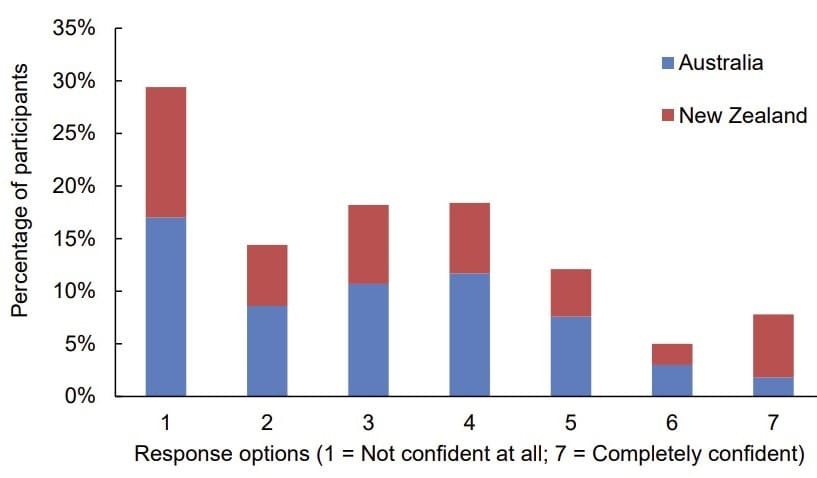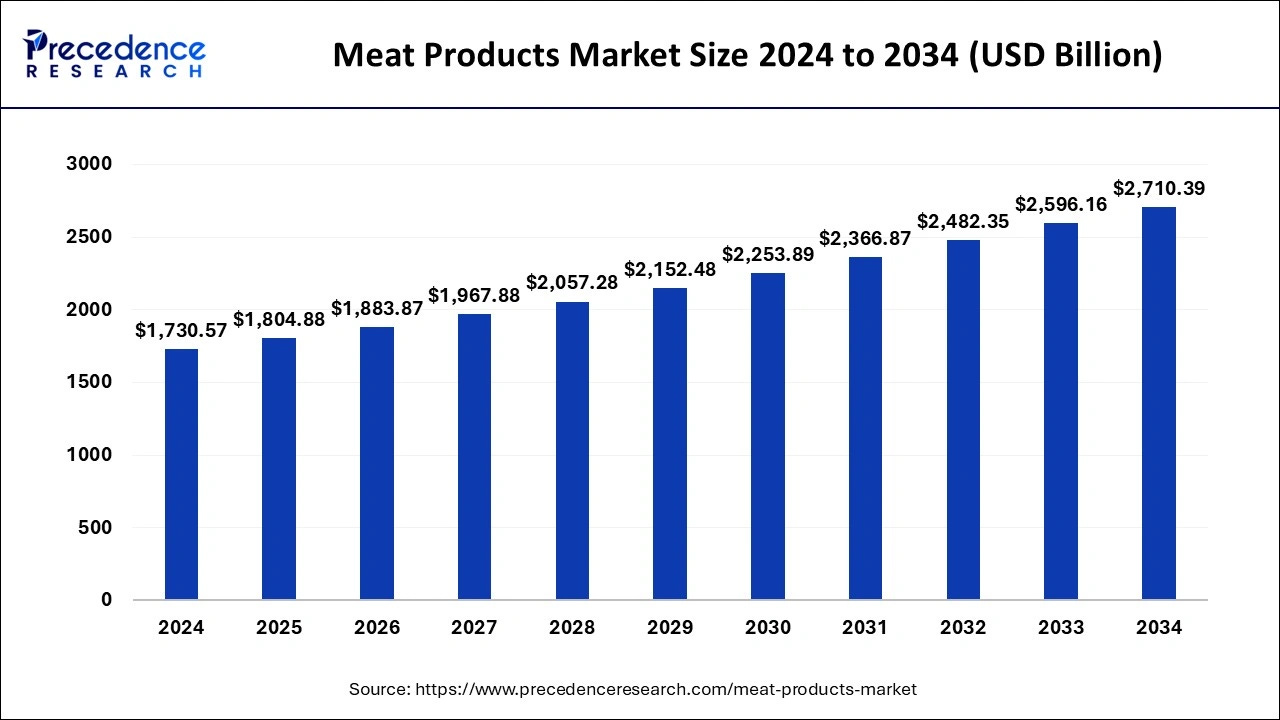Why Cultivated Meat Is Safe
Cultivated meat is here but concerns and misinformation about its safety persist. I explain why it's absolutely safe.
Cultivated meat is a promising alternative to traditional factory farming, allowing meat eaters to have their cake and eat it too.
Ensuring the safety of cultivated meat isn't just important—it's critical for cultivated meat to win over consumers.
It All Comes Down to Safety
Outside of taste, safety is the biggest hurdle on cultivated meats’ path to mainstream adoption.
I’ve heard many reactions when people first hear about cultivated meat.
I mostly get positive or curious comments, but for every enthusiastic response, there are a few skeptical comments.
"Do you mean lab-grown meat? Why would I eat anything grown in a lab?"
Or
"Oh no, not that fake meat stuff…Yuck!"
Surveys Point To Safety Concerns
These reactions are quite common—public surveys consistently reveal health and safety as significant barriers to trying cultivated meat.
Australia (2024): 62% weren’t confident about the safety.
U.K (2024) 33% were uncertain about whether cultivated meat is safe.
U.S. (2023) 50% of adults surveyed who were "not very or not at all interested" cited safety concerns.

Of course, we should take these surveys with a grain of salt, because the language you use matters.
Respondents consistently rank with lower attitudes if it’s called “lab-grown” due to negative connotations with being unnatural or experimental. Attitudes also vary depending on:
Education levels
Age (younger people are more open to cultivated meat)
But here’s the positive: when consumers are educated on cultivated meat and the technology is explained to them, they’re very willing to try it.

Earning Consumer Trust Back
Consumers are skeptical—but it's not without reason.
Below are three examples where regulatory health agencies fell short of protecting consumers.
Processed cereals & sugar: Large food conglomerates heavily marketed sugary cereals as essential for breakfast, despite mounting evidence of their negative health impacts.
Brominated vegetable oil (BVO): Despite safety concerns identified decades ago, the substance was only recently banned by the FDA in 2024.
Transfats: Although concerns over transfats—a manufactured type of fat used in industrial food production—have been voiced since the 1950s, it took until 2015 for the FDA to say they’re "not generally recognised as safe” for use in foods. Since then, many countries have issued outright bans.
Given these past regulatory failures, it's understandable why consumers are cautious.
But What Does the Science Say?
As a quick refresher (see the video explainer) cultivated meat involves growing animal cells in sterile controlled environments. It’s like crafting beer or cheese, effectively growing or curing it.

What Are The Safety Risks?
In a detailed 2023 World Health Organisation analysis, 53 potential health hazards were identified with cultivated meat and grouped into five areas:
Biological hazards: Harmful germs like bacteria, viruses, or fungi contaminating the cells introduced during production.
Chemical hazards: Unintended chemicals—such as drug residues or heavy metals—that might sneak into the food.
Physical hazards: Unwanted foreign objects, like bits of packaging or equipment fragments, accidentally get into the final product.
Process-related hazards: Unique steps in growing and harvesting cells might introduce safety issues from novel substances or changes during processing.
Allergen hazards: Food might contain substances that trigger allergic reactions, either naturally from the source materials or additives used during production.
Here’s The Thing—Most Foods Have Hazards
Although the WHO found health hazards, most foods have health hazards to a degree
chicken can have diseases or infections such as salmonella.
viruses can be spread through unhygienic and crowded factory farms
other contamination risks also apply to traditional animal farming
For example, just this month a Canadian supermarket recalled ground beef due to possible plastic contamination. Or perhaps you’ve heard about the time Taco Bell had to recall 2.3 million pounds of beef.
From a scientific standpoint, cultivated meat doesn't pose many unique hazards compared to conventional meat, provided safety protocols are strictly followed.
In many cases, cultivated meat can produce fewer hazards than traditional meat production, but let’s get to that later…
Debunking Lies—The Cancer Myth
The biggest concern being spread is the link to cancer, which has spread across social media like wildfire.
It all started with myths that cultivated meat has “cancer cells” that are “fast-replicating,” and create serious health concerns.
The misconception lies with what’s called “Immortalised Cells”. These cells can grow without limit, helping to grow the cultivated meat. But there’s been no such concern from the WHO or countries that approved cultivated meat.
we found that our immortalised cells cannot form tumors, that they repair broken DNA very well, and lack any cancer-related mutations. — Believer Meat via a peer-reviewed paper in the Nature Food Journal.
The claim is also unfounded according to The Associated Press.
USA Today’s fact checker also categorically labeled this concern as false citing federal regulators’ research.
The Food and Drug Administration said cancer cells are not used in the process of making cell-cultivated food. - USA Today
Regulatory Bodies Are Approving
Regulators globally have started approving cultivated meat products after thorough evaluations—so far, three countries have approved it:
Israel: The first country to approve cultivated beef in January 2024
Singapore: The first country to approve cultivated chicken in 2020.
The United States Granted approvals in 2023, following extensive FDA and USDA assessments.
Just recently, Food Standards Australia New Zealand (FSANZ) approved cultivated quail citing no safety concerns.
At the estimated consumption levels, there were no toxicological concerns related to the cell media or inputs used in the production process. — The Green Queen
These approvals underscore regulators' confidence in cultivated meat's safety when stringent standards are upheld.
Importantly, there have been no countries that have banned or rejected cultivated meat approvals based on scientific evidence of health risks or due to cancer risks.
It Can Be Better For You
The thing that’s missed in all this debate is the positives of cultivated are being overlooked.
It’s also known as “clean meat” due to its ability to provide potential health benefits, such as
#1 Removing diseases & viruses through a more sanitary environment
Funnily, cultivated meat could contain less contamination than usual factory farming and have less disease risk due to the meat removing harmful diseases or infections.
Consider mad cow disease is a progressive neurological disease in cattle, or that over 10% of the egg-laying chickens were recently killed due to the bird flu virus.
Experts have warned the increase in mass animal factory farming is causing a rise in disease and viruses.
Experts claim deadly spillovers of disease between livestock and wildlife are increasing with the growth in intensive methods - The Guardian
#2 Ability to edit and create new healthier forms of meat
Cultivated meat can also be modified to create alternative meats with different nutritional densities.
Tailoring possibilities include adjusting nutrient profiles, “whether that’s less saturated fat and cholesterol, or more vitamins or healthy fats” - Valeti of Upside Foods
If It’s Not Safe, We’ll Know About It!
Interestingly, the intense scrutiny from the traditional meat industry may help assure its safety.
The meat industry is big—worth upwards of $2T annually. The global meat lobby is large, especially in the U.S.
Their advocacy work is highly influential, with their lobbying critical in getting three U.S. states to ban cultivated meat.
Yet, despite all this scrutiny, critics haven't produced concrete evidence of genuine safety issues.
If legitimate safety concerns existed, powerful opponents would certainly publicise them to squash the cultivated meat industry, making cultivated meat nothing more than an epic misadventure.

Conclusion
While consumer caution is understandable, the current scientific consensus, backed by rigorous regulatory reviews, strongly supports cultivated meat's safety.
Although there are safety concerns, in most cases, this is no different from any other food product and there is no evidence of cancer cells in cultivated meat. Given the size of the traditional meat market, if cultivated meat was indeed unsafe, then where’s the evidence?
It’s becoming very clear that the future of meat is closer—and safer—than most think.





